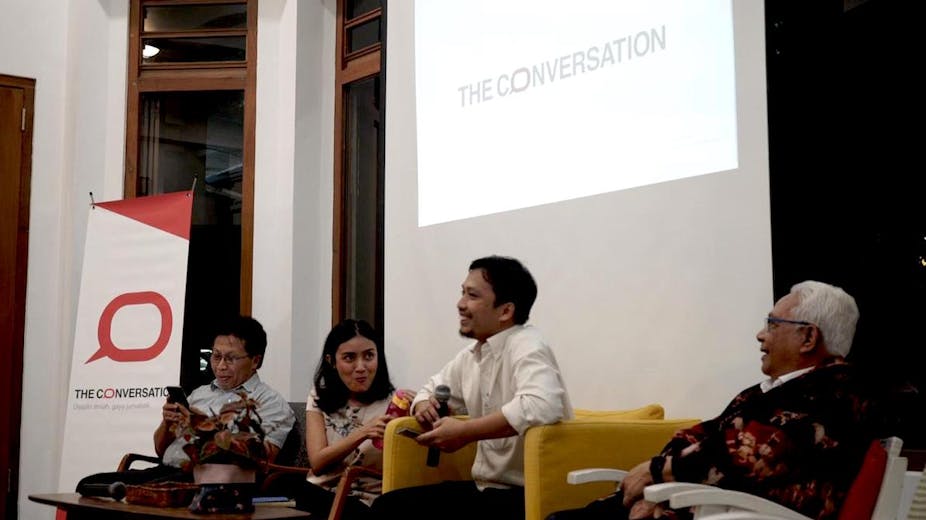Back in September we celebrated our first anniversary and launched a survey to understand our audience better. We wanted to use the momentum of our anniversary to learn from the past year and find out how our work is making impact.
This is important as our aim is to highlight research and knowledge produced by universities and research institutions and present them in easy to understand language for the general audience.
It’s part of our effort to provide evidence-based journalism to the public, to improve the quality of public debate so that discussions in various forums - on social media, government offices, classrooms even dining tables - are substantive and can move people to find solutions to our shared problems.
The survey generated 448 responses from readers, authors/academics, and journalists. We found that readers use our content not only for information or to widen their horizons, but also to use them in their daily lives and work.
The respondents of this survey consisted of 191 men and 92 women. Close to 95% live in Indonesia, spread across 26 provinces, including Papua and West Papua as well as East and West Nusa Tenggara. The majority participants are from Jakarta, West Java, and Yogyakarta.
Most of them are 25-34 years old (105 people), 18-24 years old (78 people), and 35-44 years old (67 people).
Audience use of The Conversation Indonesia
Based on our audience data records from Google Analytics, the majority of our readers are young men. Currently we have an average of 140.000 readers every month, with 42.3% women and 57.7% are men.
From our survey, we found that the majority of our respondents have obtained undergraduate degrees or higher, and are not academics.
They have a very positive view on The Conversation. Some 88.37% of them liked The Conversation and 89.38% would recommend us.
We asked our respondents how they use The Conversation’s content. As we suspected, most of them (68,56%) used it to deepen their understanding of a certain topic, strategy or project.
But not only that, at least half of our respondents (50.17%) use the information they’ve obtained from The Conversation to change their daily attitude or behaviour. More than half (52.51%) use the content to inform others about a particular topic.
Close a fourth (24.41%) use our content to support strategies, programs or decisions that have been implemented. And 23.41% employ knowledge from The Conversation to construct new strategies, policies, decisions or programs (such as for papers, project plans or policy recommendations).
We also asked our respondents what they do after reading our content. Most of them share the articles through social media and discuss them with colleagues. Some 32.78% do further research. And 30.43% have used them as teaching or class discussion materials.
There are respondents who said that they’ve used content to learn Indonesian language and to widen their vocabulary. One respondent mentioned that articles from The Conversation have “strengthen their resolve living in Indonesia”.
Working with editors
Articles from The Conversation are subjected to a rigorous editing process that involve collaboration between editors and academic authors. For transparency, authors are required to divulge potential conflicts of interest by disclosing the sources of research funds and affiliations they may have. Ultimately, authors have the final say to approve the publishing of their article.
Our survey results show that the majority of our authors (94,55%) said the collaborative editing process with our editors was helpful and 92,59% say that they had a positive working experience with editors from The Conversation. “The editor really helped me translate academic ideas into lay language,” says one respondent.
Authors’ experiences working with editors—Prodita Sabarini, Ika Krismantari, and Ahmad Nurhasim—have overall been positive.

We aim to make The Conversation as a knowledge hub, so we were pleased to find that 42.59% of our authors have been contacted for further academic collaborations, and 42.27% have been contacted by other media after writing for The Conversation.
We have received from our authors inputs to improve The Conversation, including enhancing the quality of our translations and the possibility of one topic being covered by a number of different articles by different writers to offer more diverse perspectives.
Improving the quality of media content
To spread knowledge to the public, we publish our articles under Creative Commons license, so that any media can republish our content for their audience.
Some 75.69% of journalist respondents have said that our articles have improved the quality of their content and educated their readers. Almost 80% have admitted wanting to republish more relevant articles that are available, and have also given feedback to which sections need more coverage.
Almost 90% of our respondents who are journalists say that they would recommend TC to other media for republishing.
The insight we have received from our survey results show that The Conversation has been beneficial for our readers. We need to improve in our role as knowledge hub. And we need to add more content in all of our sections. We are determined to be better. Stay with us, and we look forward to your assessments next year.
Translated from Indonesian by Rizkina Aliya

